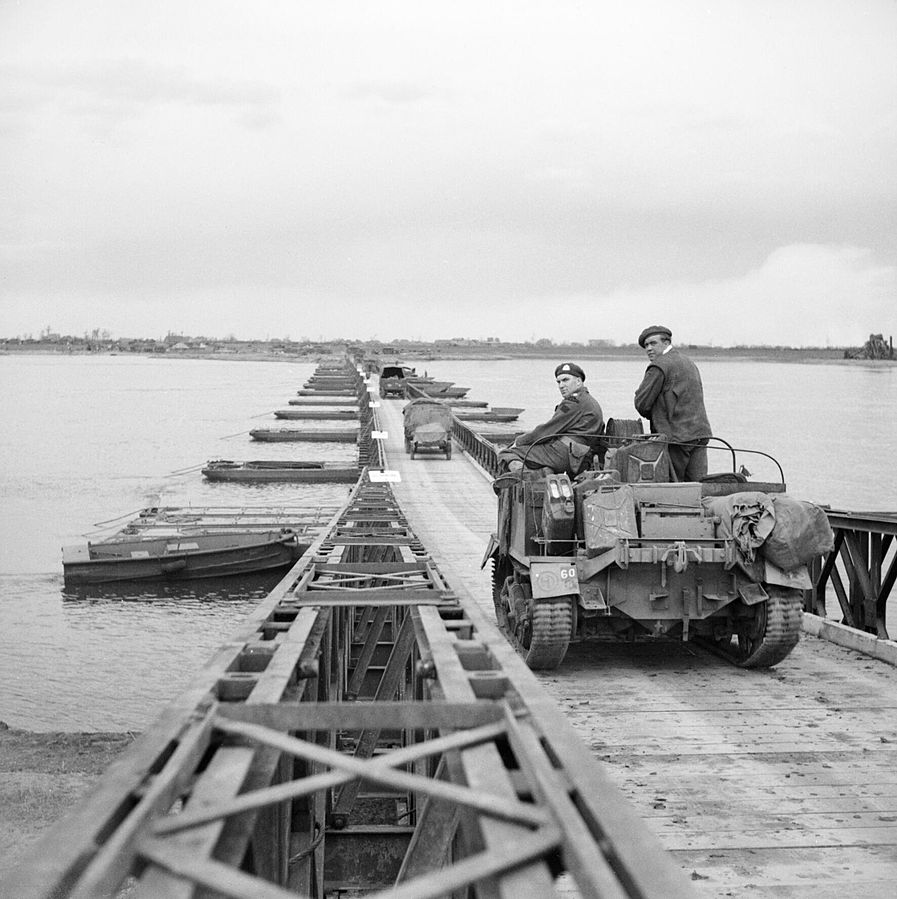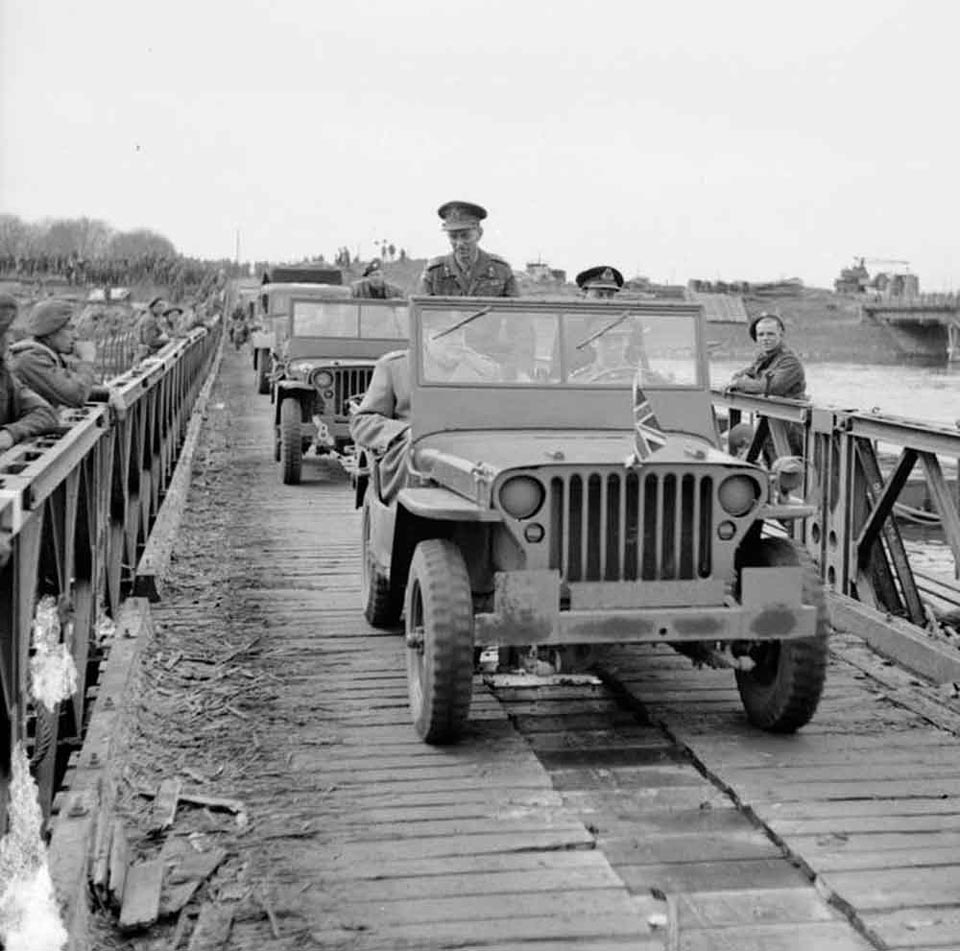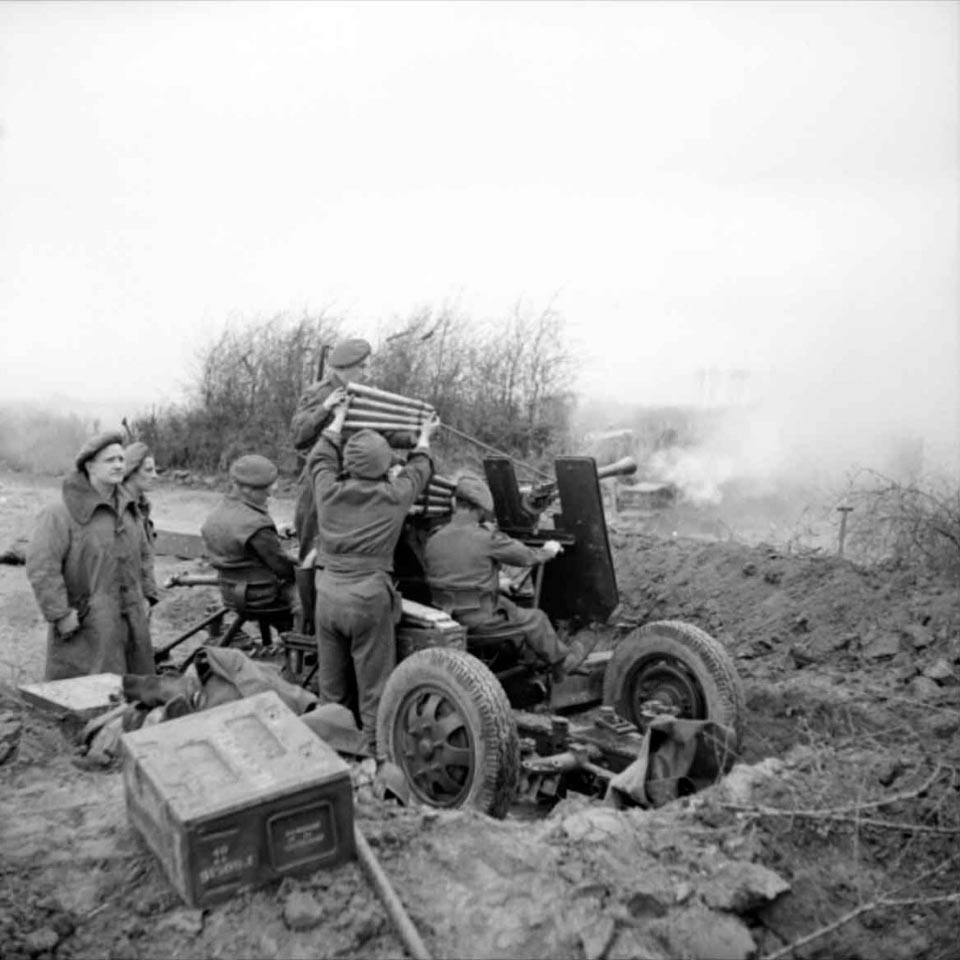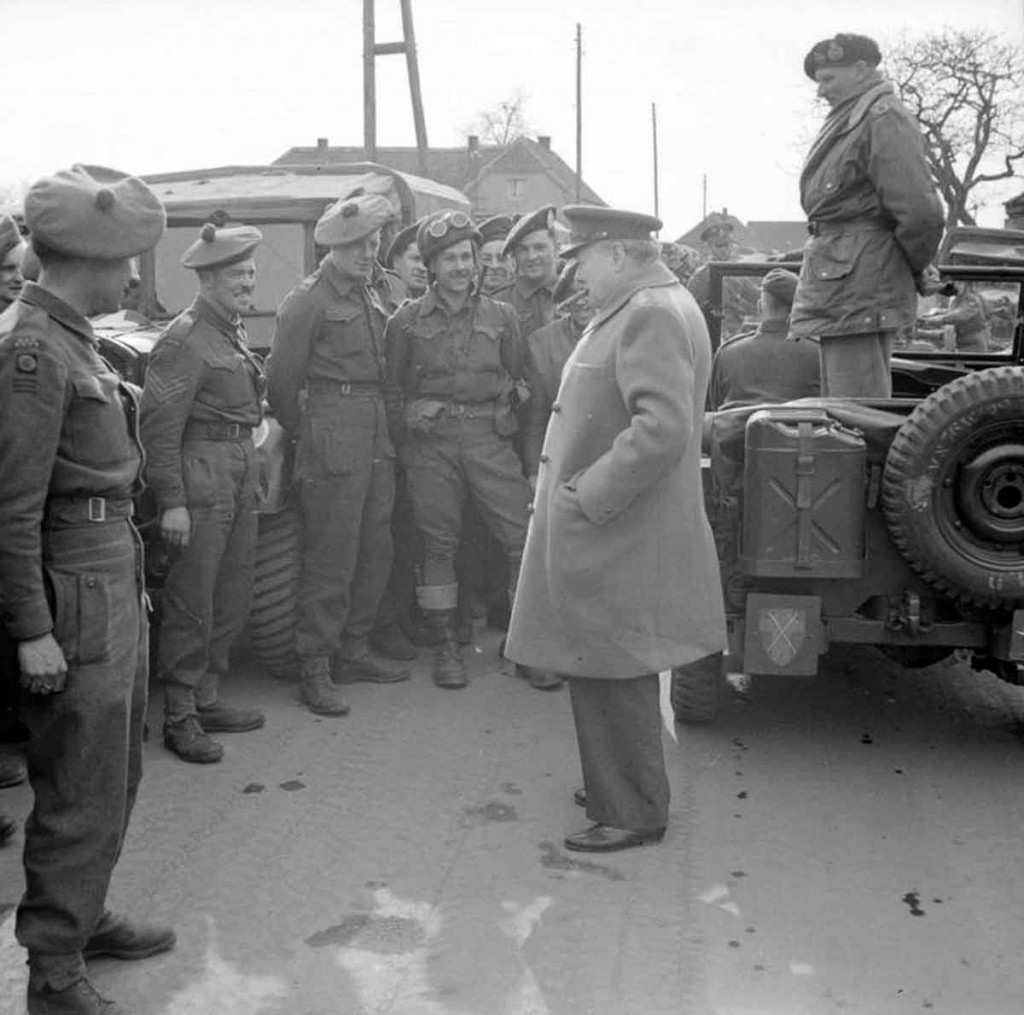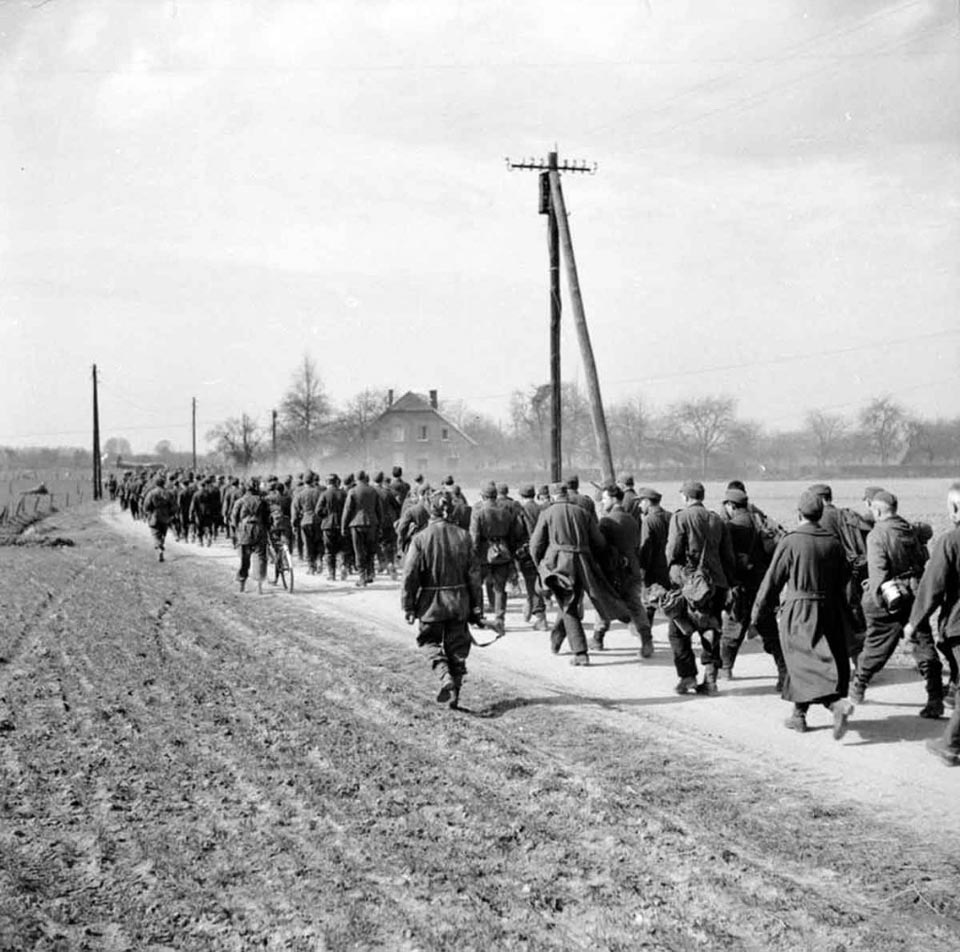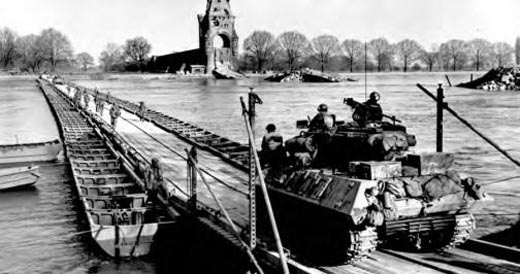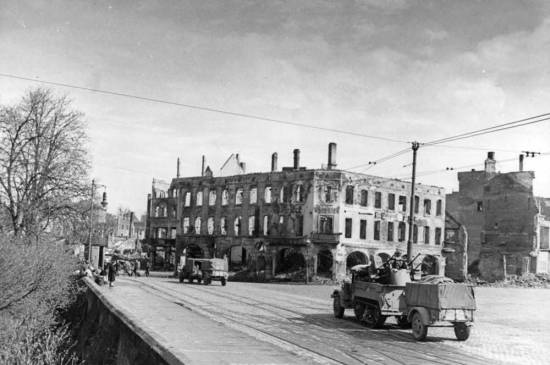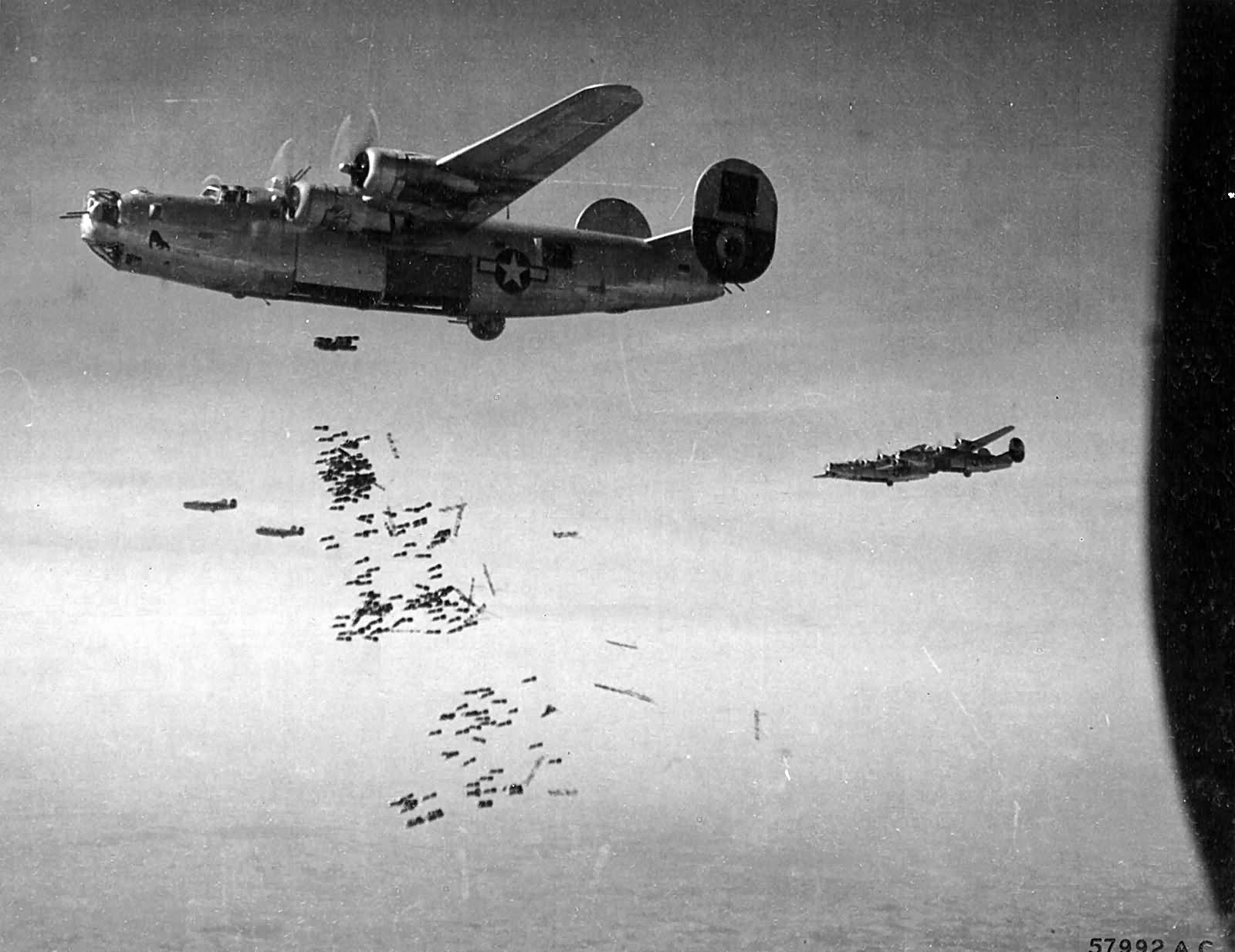Air Operations, CBI
BURMA- 10 10th Air Force B-25s and 28 P-47s attack troops, artillery positions, road targets, and supplies across central Burma.
- A 2nd Air Commando Group P-47 brings down a Ki-43 'Oscar' fighter over Rangoon's Hwambi airfield at 0625 and 1st Commando Group P-47s down 2 more 'Oscars' in the same action.
- 15 341st Medium Bomb Group B-25s and more than 80 14th Air Force fighter-bombers attack lines of supply and communication across southern and eastern China.
Air Operations, Europe
RAF BOMBER COMMANDEvening Ops:
Minor Ops:
- 86 Mosquitos are sent to Berlin, 2 each to Erfurt and Paderborn, and 2 which bomb both Berlin and Magdeburg on a 'siren tour'.
- There are no losses.
GERMANY:
- Due to bad weather, only 12 1st Air Division B-17s attack their primary, an oil-industry target at Zeitz, but 130 attack their secondary target, a tank factory at Plauen.
- 139 3rd Air Division B-17s attack their primary, the tank factory at Plauen.
- 49 B-17s attack various targets of opportumity.
GERMANY:
- Approximately 300 9th Air Division bombers attack marshalling yards at three locations, and a defended town.
ITALY:
- 12th Air Force B-25s are grounded by bad weather, and XXII TAC P-47s are able to mount only limited missions against rail targets in the Po River valley.
AUSTRIA:
- 15th Air Force heavy bombers attack marshalling yards at three locations.
- 15th Air Force heavy bombers attack a marshalling yard at Bratislava.
- 15th Air Force heavy bombers attack a marshalling yard.
Air Operations, Formosa
V Bomber Command B-24s attack Takao.
[Air Operations, Japan
4 28th Composite Bomb Group B-24s attack the Kataoka naval base, but 2 flights of 4 B-25s are prevented by enemy fighters and bad weather from attacking canneries in the Kurile Islands.
[Air Operations, Philippines
- V Bomber Command B-24s, B-25s, and A-20s, and V Fighter Command fighter-bombers attack Legaspi and a fuel dump.
- Fighter-bombers attack targets in northern Luzon.
- A-20s and fighter-bombers support US 6th Army ground forces in southwestern Luzon.
- XIII Bomber Command B-24s and V Bomber Command A-20s attack Cebu City and other targets on Cebu.
- 5th Heavy Bomb Group B-24s attack pre-invasion targets at Legaspi, Luzon.
- US 8th Army ground forces invade Cebu following a devastating air and naval bombardment. Cover and direct support is provided by Marine Air Group 14 F4Us based at the Guinan airfield on Samar, V Bomber Command A-20s based on Palawan, and FEAF fighters based on Leyte.
Air Operations, Ryukyus
- Covered by Task Group 52.1 TBMs and fighter-bombers, US 10th Army ground forces open Operation ICEBERG with landings in the Kerama Islands, which will be converted into a seaplane base and a fleet anchorage. Opposition following a full-scale air and naval pre-invasion bombardment is negligible. Japanese aerial reaction is mainly in the form of uncoordinated attacks against shipping by 9 kamikazes.
- Task Force 58 and Task Group 52.1 carrier aircraft attack numerous pre-invasion targets on Okinawa and Royal Navy carrier aircraft from Task Force 57 mount neutralization strikes against airfields in the Sakishima Islands.
- US 5th Fleet destroyers and destroyer-minesweepers establish a radar picket barrier aimed at thwarting Japanese air attacks against the Okinawa invasion fleet. Each ship is host to a fighter-director team that can guide elements of a standing 'barrier combat air patrol' against attackers while the attackers are still some distance from the fleet off Okinawa.
- A VC-84 FM downs a Ki-61 'Tony' fighter at sea at 0615 hours.
- A VF-33 F6F downs a D3A 'Val' dive bomber at sea at 0618 hours.
- A VF-6 F6F downs a Ki-61 'Tony' fighter at 0945 hours.
- A VF-10 F4U downs a G4M 'Betty' bomber at sea at 2045 hours.
- A VF-10 F4U downs a G4M 'Betty' at sea at 2130 hours.
Battle of the Atlantic
U-399 attacks the coastal Convoy BTC-108 and sinks the Coastal Pacific (362t). Trailing the convoy are ships of Escort Group 3. The British frigate Duckworth delivers a Hedgehog attack followed by other 'tin opener' attacks resulting in the sinking of the U-boat.
| Class | Type VIIC |
| CO | Oberleutnant zur See Heinz Buhse |
| Location | English Channel, SW of The Lizard |
| Cause | Hedgehog |
| Casualties | 46 |
| Survivors | 1 |
Britain, Home Front
David Lloyd-George, Earl Lloyd-George of Dwyfor, dies at the age of 83.
[CBI
CHINAThe American airfield at Laohokow is abandoned to advancing Japanese forces.
[Eastern Front
In Hungary, the 3rd Ukraine Front takes Papa and Devecser.
Dietrich's 6th SS Panzer Army and the 6th Army try to dig in on the Raba River, where they manage to contain the Russian thrust for 2 days.
In Czechoslovakia, the 2nd Ukraine Front takes the important road and railway junction of Banská Bystrica.
In East Prussia, the 3rd Belorussian Front continues with the liquidation of those German forces that have not been able to save themselves, while the 2nd Belorussian Front crushes the second line of defense in front of Danzig and Gdynia and reaches the third and last line defending these ports in many places.
CENTRAL SECTORThe 19th Army begins the assault upon Gotenhafen.
SOUTHERN SECTORThe 26th Army captures Devecser as the 6th SS Panzer Army falls back to try and establish a line of defense on the Raab River. North of the Danube the 40th Army (2nd Ukrainian Front) takes Banska Bystrica.
[Indian Ocean
British destroyers and Liberator bombers annihilate a Japanese convoy.
[Iwo Jima
At dawn the remaining Japanese troops on the island launch a last desperate attack on the American forces, with no other aim than to kill as many Americans as possible. Of the 200 attackers, 196 are killed. At 8:00a.m. the Americans declare that the capture of the island has been completed. Only just over 200 of the Japanese garrison of 20,700 remain alive as prisoners of the Marines. It has cost them more than 20,000 casualties, of which about 6,000 have been killed and 17,200 wounded or about one-third of all those taking part in the campaign. In addition 90 US Navy personnel have died. The Japanese garrison of 21,500 men has been literally annihilated; the body of Gen Tadamichi Kuribayashi is never found. The island provides the Americans with a new air base against Japan and serves to enhance the effect of the air and sea blockade of the enemy country.
[Pacific
- The British Pacific Fleet, TF 57, launches the first of many air strikes against airfields on Sakishima Gunto Island between Okinawa and Formosa.
- The US destroyer Halligan (DD-584) sinks when it hits a mine in the Okinawa area. Damaged by suicide planes in the Okinawa area are the high-speed minesweeper Dorsey (DMS-1) and the minelayer Skirmish (AM-303).
- The US submarine Balao (SS-285) sinks the Japanese army stores ship No.1 Shinto Maru (880t) in the middle of the Yellow Sea.
- British destroyers Saumarez, Volage, Vigilant and Virago annihilate a Japanese Port Blair-bound convoy east of Khota Andaman. They sink the submarine chasers CH-34, CH-63, the transport Risui Maru (1500t) and the supply ship Teshio Maru (361t).
Philippines
In the US I Corps sector, units of the 25th Division begin the final attack on Norton's Knob after the enemy positions have been 'softened up' by heavy air and artillery bombardment. In the XI Corps sector, units of the 1st Cavalry reach Malvar, while the 11th Division launches unsuccessful attacks on the Japanese positions on Mount Macolod and advances slowly toward Lipa.
American units, about 14,000 men commanded by Gen William H. Arnold from the Americal Division, come ashore near Talisay on Cebu Island. Overcoming the weak Japanese resistance, they advance on Cebu City, taking the line of the Mananga River before the end of the day. Adm Russell S. Berkey leads a bombardment group in support.
[Ryukyu Islands
Forces of the US 77th Division land on Kerama Retto Island and on some nearby islets, in readiness for the main landing on Okinawa and overrun weak Japanese resistance. The operations are supported by aircraft and ships of the US 5th Fleet, namely the 10 battleships, 10 cruisers and 33 destroyers of TF 54 under Adm Morton L. Deyo. Japanese reaction is entrusted to a group of suicide aircraft, which manage to damage the battleship Nevada (BB-36), not seriously, the light cruiser Biloxi (CL-80) 4 destroyers: Murray (DD-576), Porterfield (DD-682), O'Brien (DD-725), and Callaghan (DD-792) and the destroyer escort Foreman (DE-633).
[Soviet Union, Home Front
Marshal Boris M. Shaposhnikov, former personal military adviser to Stalin and the Red Army's greatest strategist, dies after a protracted illness at the age of 62.
[Western Front
Units of the British XXX Corps, 2nd Army, succeed in extending their bridgehead over the Ijssel. The front line of the XVIII Airborne Corps now runs between Ringenberg in the north and the Lippe River near Krudenberg in the south.
The swift advance of the XVI Corps, US 9th Army, continues without a break with average gains of from 2 to 3 miles per day.
In the US 3rd Army sector the 6th Arm Div, XII Corps, reaches the south bank of the Main River near Frankfurt and attempts to enter the city, under heavy bombardment from the Germans. The other divisions of the XII Corps, the 5th, 90th, 26th and 4th Arm, also reach the Main.
The 45th and 3rd Divs of the XV Corps, US 7th Army, now cross the Rhine, in the early hours of the morning, the first near Hamm and Rhein, Dürkheim, the second near Worms and Mannheim.
[Images from March 26, 1945
|
|
|
|
|
|
|
|
